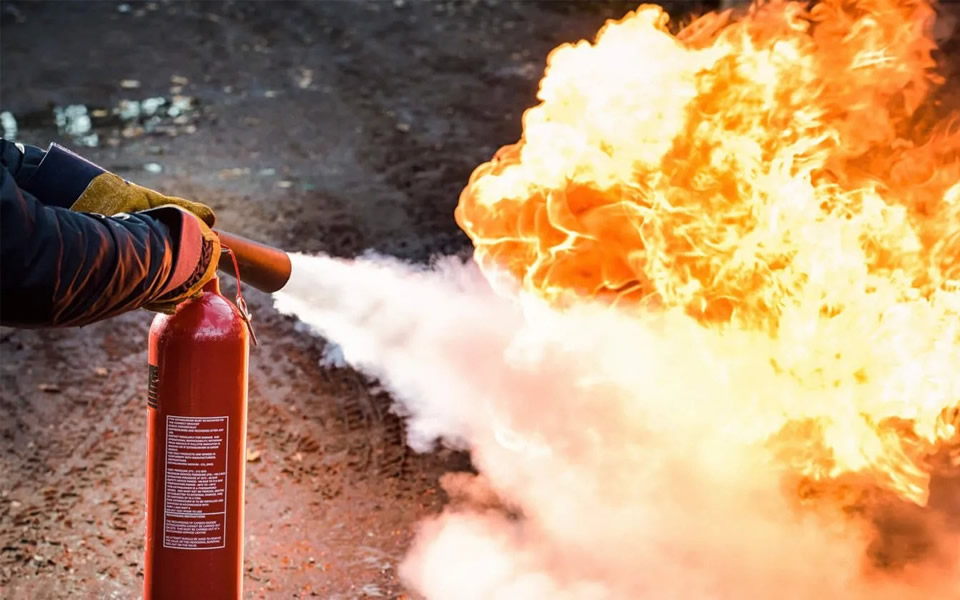
What does a Fire Marshal do?
A fire marshal’s work lies between that of a fire investigator and a fire inspector. His duties primarily incline on educating others on fire safety measures, fire service and inspection, investigating fire causes, and enforcing the fire code. A fire marshal may be required to undergo training, and specialize in law enforcement, emergency medical services, or forensics.
He is responsible in ensuring an organization’s workplace is ‘fire-proofed’. That doesn’t mean that a workplace will never catch fire but when it does happen, the organization will be equipped to prevent, protect, and minimize damages.
What are preventive fire occurrence measures?
Preventive fire occurrence measures are just as important as safety measures in the event of fire. After all, the safest way to deal with fire is to prevent it. It involves practices and methods that a fire marshal enforces and inspects in a workplace to ensure fire safety and prevention.
Creating suitable fire prevention measures starts off with a risk assessment of the workplace. Upon identification of hazards, a fire occurrence prevention plan can be formulated including:
- Employee awareness and program implementation that includes preparation, prevention, and recognition of fire hazards
- Proper operations and maintenance programs, housekeeping practices, and handling of flammable chemicals
- Proper area designation for particular activities
- Provision of security (both enforcement and personal protective equipment)
- Installation of fire detection and warning devices
- Provision of emergency escape and adequate fire suppression equipment
How do you raise an alarm?
Upon discovering a fire, raise the alarm by screaming “FIRE” to alert anybody in the vicinity and immediately activate the nearest push-glass fire alarm call-point. It is a small red box, commonly found close to major exits.
The fire marshal of the workplace should contact the fire brigade, if the company isn’t automatically linked to the services.
He should be able to use a fire extinguisher and put out small fires confidently. He should be able to suppress flames and allow passage through exits.
The fire marshal assists and directs people through the nearest exit to leave the building and proceed to the assigned muster point in case of fire.
What are the classifications of fire?
There are three key elements to start fire, which are: heat, oxygen, and fuel. Without these elements, fire will not start or spread.
The classification is established to ensure that different types of fire will be put out safely and without further accidents.
The following are the 4 common classifications of fire:
- CLASS A: Involves common combustible materials such as wood, paper, cloth, rubber, trash, and These materials are practically everywhere, both in commercial and household setting. Class A fires can be put out with water, carbon dioxide and ABC fire extinguishers.
- CLASS B: Involves flammable liquids like solvents, oil, paint, petrol products, and other synthetic and oil-based products. Class B fires spread rapidly unless properly secured, and can re-ignite after the flames are extinguished. ABC, BC dry chemical, and carbon dioxide fire extinguishers can put out this kind of fire.
- CLASS C: Involves electrical fires caused by energized electrical equipment, such as wiring, controls, motors, data processing panels or appliances. They can be caused by a spark, power surge, or short circuit. It commonly occurs in places difficult to see. Although ABC and BC Dry Chemical extinguishers can control a fire involving electronic equipment, dry-chemical extinguishers are not advisable for fires involving computers or other delicate electronic equipment due to the potential damage from residues.
- CLASS D: Involves combustible metals such as magnesium and sodium. Combustible metal fires are unique industrial Only special dry powder agents/extinguishers are to be used.
How do you use a fire extinguisher?
Most fire extinguishers are used by following P.A.S.S. technique:
- Pull the This will also break the tamper seal.
- Aim low, pointing the extinguisher nozzle at the base of the fire. In using CO2 extinguishers do not touch the plastic discharge horn, it gets very cold and may damage
- Squeeze the handle to release the extinguishing
- Sweep from side to side at the base of the fire until it appears to be Observe the area. If the fire re-ignites, repeat steps 2- 4.
If the extinguisher has been unused for a long while, it is initially tilted slightly from side to side before using it.
Remember, if you are not confident in using one, evacuate immediately.
What is an evacuation procedure?
Typically represented by a written document, it includes the action to be taken by all staff in the event of fire and the arrangements for calling the fire brigade.
For small premises, this could be a simple fire action sign posted visibly where staff and relevant persons can read it and become familiar with its contents.
But for a larger premise, a more detailed emergency evacuation plan should be created which includes the findings of the risk assessment. It should contain clear and concise instructions of the routine to be followed in case of fire.
The following items should be considered:
- Fire evacuation strategy
- Action on discovering a fire and on hearing fire alarm
- Calling the fire brigade
- Power/process isolation and identification of key escape routes
- Provision of adequate fire wardens/marshals
- Identification of muster point and roll call
- Provision of firefighting equipment
- Training and fire drills
- Emergency evacuation plan
What is the importance of having a Fire Marshal in the company?
A fire marshal ensures the implementation of the evacuation procedure. He will be responsible in maintaining the efficiency of fire suppression devices and check fire detection and warning devices.
In the event of fire, he will ensure that everyone can safely leave the building and that a fire brigade is called on scene.
In investigation, a fire marshal can gather and mark evidence, prepare testimony and brief the public.
In other words, investment on fire marshals ensure fire prevention and equips the organization to minimize damages and casualties.



